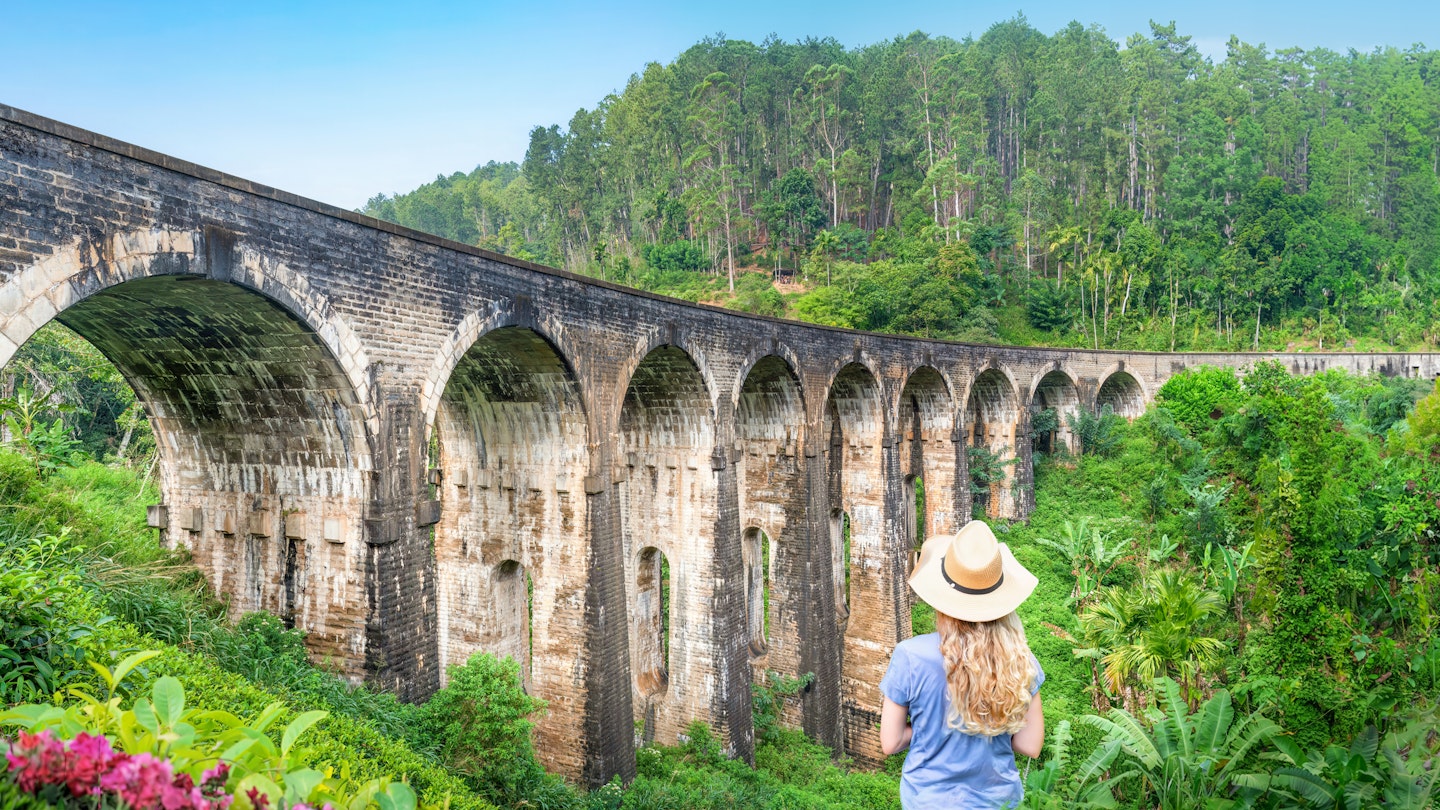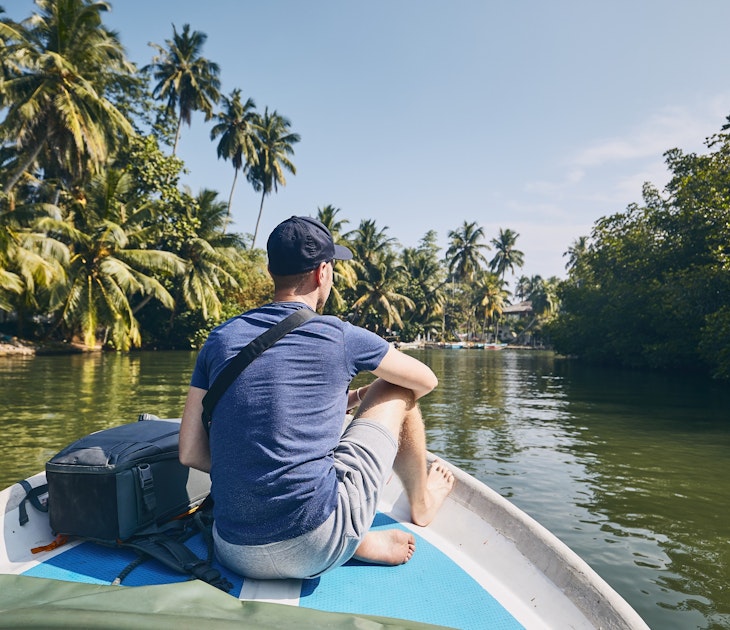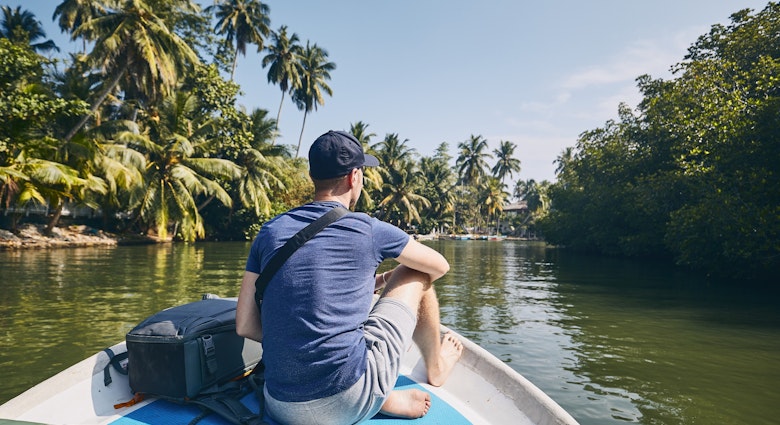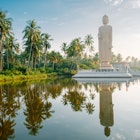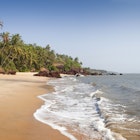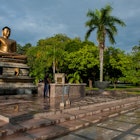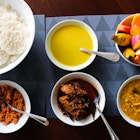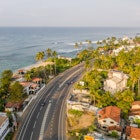Sri Lanka may only be small, but thanks to its jungle-clad mountains, golden sandy beaches, abundant wildlife in their natural habitats, and spice-laden cuisines, the island nation ensures visitors are never bored.
From remarkable train rides and fine dining across the capital Colombo to world-class surfing and chic beachside cafes in the south of the country, here are 18 of the best things to do in Sri Lanka.

1. Watch sunrise over Little Adam’s Peak
Not to be confused with Adam’s Peak, the sacred mountain near Hatton that involves an arduous 5000-step climb, Little Adam’s Peak is a popular, easy-to-do hike for those visiting the tourist hub of Ella. Start your one-hour hike early in the morning when it’s dark outside so you don't miss the sunrise from the summit. Hikers wanting more can then trek Ella Rock and follow a path leading to Nine Arch Bridge.
Ella itself is a laid-back place. Many stay outside the town, but travelers should immerse themselves in the cafe scene at Cafe Chill. Adventure buffs can go ziplining. While Ella deserves the hype, there are other quaint mountain towns that are also worth visiting: Ohiya, Idalgashinna, Haputale, and Wellawaya.
2. Taste the world's best cinnamon on Ganduwa Island
Southern Sri Lanka produces some of the world's best cinnamon, a lighter, more sweeter variety than is found in Indonesia and Vietnam. Travelers can learn about the highly prized Ceylon cinnamon by visiting Ganduwa Island on Koggala Lake, just south of Galle, by boat.
Generational peelers spend their days here skillfully shaving thin layers of the tree’s inner bark to create quills of cinnamon. You can buy them alongside small packets of cinnamon powder and cinnamon oil at a cost of about US$2. The boat then takes passengers to some of the other islands. Grab a glass of fresh kirala (mangrove apple) juice from a local vendor on the jetty as you leave.
3. Bird-watch in Bundala National Park
Home to nearly 200 species of native and migratory birds, Bundala National Park is a Ramsar-recognized wetland in the south of the country. Bird-watching tours start at 6am and run for 3–4 hours as the park comes alive with brahminy kites, hundreds of storks, families of whistling wild ducks, Asian green bee-eaters, dancing peacocks, and resting crocodiles. Come the afternoon, wild Asian elephants, spotted deer and wild boar roam amongst the Weera, Neem and Palu trees.
Planning tip: For the best chance of spotting wildlife, arrange a 4WD safari with a tour operator. Look for offices just outside the park in Bundala Junction.

4. Climb Pidurangala to see the sunrise over the jungle
No trip to Sri Lanka is complete without visiting the Sigiriya, a massive rock fortress with ruins of an ancient palace, water gardens, and frescos near the giant rock Pidurangala. Early birds should buckle up their hiking shoes and climb up Pidurangala at 5am for sunrise, but if you are not a morning person, head here for sunset before the ticket office closes at 6pm.
Planning tip: The entrance fee is US$30 for this 45-minute climb. The summit overlooks the majestic lion-shaped Sigiriya rock surrounded by tropical jungles and artificial lakes. To reach the top you’ll pass through a Buddhist temple, so carry a shawl or a sarong to cover up.
5. Go kitesurfing on the remote Kalpitiya Peninsula
With numerous flatwater lagoons and plenty of steady wind, Sri Lanka’s northwestern coast offers some of the best kitesurfing in the world. A 3.5-hour drive north of Colombo is the lesser-explored Kalpitiya Peninsula, which is still relatively new to many overseas tourists. The region is home to sandy beaches and small fishing hamlets with droves of wild donkeys strolling around large grasslands.
Stop in Kappalady on the Indian Ocean for kitesurfing lessons with local instructors at Kite Center Sri Lanka. The kite school can arrange kitesurfing safaris (tours) to nearby spots such as Donkey Point, Dutch Bay and Vella Island for more experienced kiteboarders. Other activities in Kappalady include exploring the lagoons by kayak and ethical dolphin-watching tours where large pods of spinner dolphins swim in their hundreds. Good operators will only charter small boats, keep their distance from the pods, and avoid feeding the animals. There are also a few accommodation options by the beach in Kappalady.
6. Camp in the Haputale mountains
An hour by bus from Ella are the misty mountains of Haputale, a region dotted with tea plantations and icy-cold streams. Stay in a local family-run campsite, such as the Eco Lodge Haputale run by the Dias family. After a few cups of sugary milk tea at their home, they will walk you through a tea garden to their campground made up of several tents with a small kitchen and a dining area that opens up to the Haputale mountains. Wake up to the sound of birdsong and enjoy the sunrise – it’s the highlight of a stay here.

7. Take a train ride from Colombo
When it comes to experiences in Sri Lanka, taking a train journey is a must. For mountain views coupled with tea gardens, British colonial-era railway stations, and gushing water bodies, take the Colombo to Ella train journey, which also passes through the Instagram-famous Nine Arch Bridge. There are several trains that pass through the route, but since it’s quite popular among travelers, make sure you reserve your tickets beforehand.
But don't just stop there. Hop on a coastal train heading south towards Galle from Colombo for the views of the Indian Ocean and swaying palms. Next, board a train riding up north to Jaffna – you will notice changing landscapes as you go past Anuradhapura when green rice fields and coconut trees are replaced by palmyra palms, shrubs, and barren soil.
Planning tip: Other than local families, travelers, and daily commuters, you'll find plenty of vendors on the trains selling cups of tea, instant coffee, chili-sprinkled fresh fruits, roasted peanuts, yogurt, and even mobile top-up cards.
8. Feast on Sri Lankan crabs
Sri Lankan crabs sell fast in Singapore’s fine-dining restaurants, and rarely make it to the menu back home. But that’s starting to change: for an upmarket taster in Colombo, head to the Ministry of Crab inside the Dutch Hospital Complex. For something more local, you can’t beat the Mayura Hotel in Pettah Market.
Planning tip: If you’re in the north of the country, you must try the Jaffna crab curry from Cosy Restaurant near the Jaffna Railway Station, which comes with a punchy, spicy kick.
9. Look for the elusive Sri Lankan leopard at Wilpattu National Park
Most visitors to Yala National Park want to see the endangered Sri Lankan leopard. However, overcrowding is common and safari 4WDs have been known to scare the animals away.
For a better and more conscientious safari experience, head to Wilpattu National Park in the northwest of the island and book with a responsible operator like Leopard Trails. Their guides don't chase after possible sightings, but they do turn off their vehicle engines near animals. They will also whisper near any sighting so as not to disturb the animals. As well as leopards, the park is also home to Asian elephants, sloth bears, and bark deer all in their natural habitats.
Alternatively, Kumana National Park, in the eastern part of Yala, is a good place for bird-watchers. If luck prevails, you may just come across a leopard napping on a rugged boulder too.

10. Witness the largest wild Asian elephant gathering in the world
Sri Lanka is home to an estimated 4000 wild Asian elephants, best seen in their natural habitats, the country’s national parks. During the dry months from July to September, the large reservoirs in Kaudulla and Minneriya National Parks draw herds of wild Asian elephants where they graze on grass, bathe and play together. Hot days see elephants sheltering in the nearby jungles, but in the afternoon, around 4pm, they slowly emerge. This is your chance to see hundreds of the creatures hanging out by the lakes, the largest gathering of wild elephants in the world.
Planning tip: Skip places where elephants are held in captivity – except for the Elephant Transit Home in Udawalawe. Run by the government wildlife department, with support from the Born Free Foundation, this halfway house takes in abandoned and injured elephant calves and returns them to the wild once they have recuperated.
11. Eat traditional Sri Lankan rice and curry in Unawatuna
Sri Lankans enjoy curry and rice for at least one meal a day – sometimes for all three – and while there are plenty of great places to try the national dish, Mettha's Home Cooked Meals, sandwiched between the cafes and souvenir shops of Unawatuna, in the south of Sri Lanka is among the best. Freshly prepared onsite by Aunty Mettha herself (with a little support from her family), the creamy Sri Lankan dal in coconut milk is a must.
Planning tip: If you fancy learning how to cook curry dishes, head over to the family-run Sea Waves Restaurant in Unawatuna, but don’t leave without trying the whole butterfish cooked in a secret umami-rich homemade sauce.
12. Learn the life of Sri Lanka's indigenous people
The Vedda are the indigenous people of Sri Lanka. Originally forest-dwellers, their numbers have dwindled over the years due to migration, habitat loss, and assimilation into the nation's dominant Sinhala-Buddhist culture. Now scattered across the island in small numbers, some Vedda families still preserve their native language, cuisines and rituals in places like Dambana, an indigenous village and museum in the southern part of Maduru Oya National Park.
Planning tip: For a more immersive experience, head east to Gal Oya where you can take tours with the Vedda to see their ancient caves and hunting grounds. Wild Glamping Gal Oya works closely with the Vedda community to organize ethical encounters.

13. Try kottu roti street food
No other meal captures Sri Lanka quite like kottu roti. This popular street food is a carb-heavy mishmash of fresh vegetables, leftover roti (flatbread), and eggs, plus a choice of meat or seafood. Thrown together onto a metal griddle and chopped into tiny slices using two metal blades, you can often hear the distinct clink-clink-clink of metal on metal from a few hundred feet away. Kottu roti is available across the island, but try it in Colombo from Hotel de Pilawoos or Hotel de Plaza (note: Sri Lankan restaurants are often named "hotels").
Planning tip: Don’t get deceived by any Pilawoos or Hotel de Plaza, though – there are numerous holes-in-the-wall with the same name – the originals are on Galle Road in Colombo 03. Order yours with a glass of iced Milo (a popular chocolate malt drink), which goes perfectly with a sizzling hot kottu.
14. Explore the quirky lanes of Galle Fort
Galle Fort is an eccentric mix of Portuguese, Dutch and British architectural influences surrounded by spas, luxury hotels, souvenir shops, ice cream parlors and gem boutiques. Come in the morning hours when the Fort lanes slowly open up. First, eat a hearty Sri Lankan breakfast at National Tea Rooms, which is the oldest existing cafe in Galle Fort run by a friendly Sri Lankan family since 1932.
Shop for postcards and wall posters with funky Sri Lankan graphics, tuk-tuks and vintage maps at Stick No Bills. For lunch, don’t miss the peppery black pork curry at Church Street Social. The view from the ramparts is a must-see, especially during sunset.
15. Chase the waves with Sri Lanka’s first local female-run surf club
Surfers of all levels head to Arugam Bay on the east coast. During the season from April to August, this curl of soft, ocher sand comes alive at night with parties, booze and live music. It also has a laid-back surf scene, including the Arugam Bay Girls Surf Club, the first all-women club in Sri Lanka, which holds swimming, surfing and yoga lessons for the community.
Planning tip: The beach shacks that dot the shoreline serve delicious Sri Lankan roti stuffed with chocolate, banana, chicken, cheese and vegetables for a post-surf pick-me-up.

16. Cycle through the ancient kingdom of Polonnaruwa
Following the fall of Anuradhapura, Polonnaruwa became the second capital of Sri Lanka from 1070 to 1232, and the ruins of this ancient city are now a Unesco World Heritage Site. Don't miss the Vatadage, a circular relic house with a large Buddha statue. Beyond that, cycle through the ancient city and pay a visit to the ancient Royal Palace.
Other impressive archaeological relics, including the standing Buddha in Lankatilaka Vihara and a series of Buddha statues carved out of granite in Gal Vihara. You can see the South Indian influence in some of the remains – this is because the ancient kingdom faced several South Indian invasions back then.
Planning tip: Arrive early in the morning to beat the sweltering sun and get the best of this wonderful archaeological park to yourself. The Polonnaruwa ruins are crowded during weekends, school holidays, and on the full moon.
17. Get close to nature with a stay in a treehouse
Nature lovers will enjoy the experience of sleeping in a treehouse. Surrounded by the nearby jungle, these houses are built on a wooden platform up the tree. Book one of the treehouses at Back of Beyond in Sigiriya if you don’t mind visiting lizards and monkeys.
For those who are in the far south of Sri Lanka, Tangalle is a mix of rugged sandy beaches, lagoons and shrublands. Here, Jaywa Lanka has a treehouse next to the mangroves; you’ll only hear the faint hum of crashing waves and twittering of birds. Occasional visitors include wild peacocks trying to charm their peahens.
18. Snack on hoppers
If there’s one thing to try before you leave Sri Lanka, it’s hoppers (aappa in Sinhala; appam in Tamil), bowl-like pancakes made from rice flour batter. With crispy edges and fluffy centers, plain hoppers are eaten with curries or a spicy sambal (chili paste) called lunu miris made with onions and dried red chili.
Walk into a street joint in the evenings and you’ll often find plain hoppers topped with an egg. If you are in Colombo, head to Palmyrah Restaurant in Renuka Hotel for some Sri Lankan fine dining; the dinner menu includes both savory and sweet hoppers with milk or jaggery. Or, if you don’t mind long lines, try some hoppers from Aunty Radhika in the Wellawatta neighborhood. Walk past the bank on WA Silva Mawatha to find this small, but popular, hopper stall.
